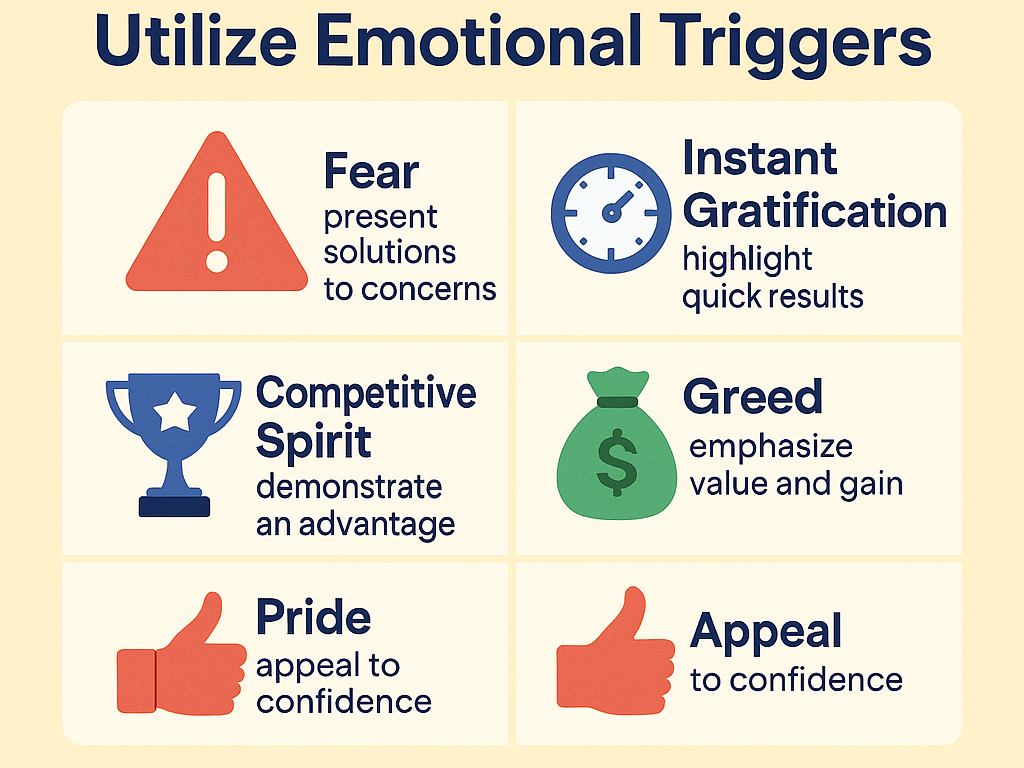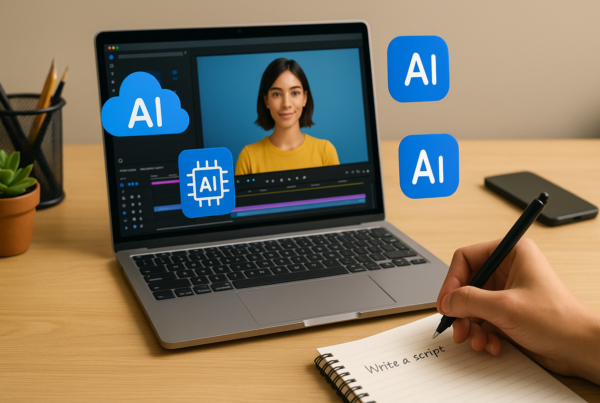Customized call-to-actions perform 202% better than simple CTAs. Your ad copy optimization efforts might not deliver these impressive results. Statistics indicate that 39% of people find ads to be irrelevant to them. The real challenge lies in crafting compelling ad copy that resonates with your target audience.
Compelling ad copy can significantly enhance your conversion rates and reduce your cost per click. It leads to better ROI. This piece outlines proven strategies to optimize underperforming ads. You’ll learn how to craft high-converting ad copy and implement effective A/B testing strategies for improved results. The difference between good and bad ad copy becomes clear, and you’ll immediately know how to boost your advertising performance.
Start with the Right Ad Copy Strategy

Your ad copy optimization experience starts with strategy, not tactics. A solid foundation should guide your creative decisions and help your ads achieve measurable results before you start crafting compelling headlines or calls to action.
1. Define your campaign goals clearly.
Excellent ad copy doesn’t exist in a vacuum. Even the most creative ad copy will fall short without well-defined marketing objectives. Paid campaigns can effectively reach your target audience, streamline processes, and convert prospects into customers when they match your marketing objectives.
What makes campaign goals work? The most successful advertisers use SMART, Specific, Measurable, Achievable, Relevant, and Time-bound goals. For example, rather than a vague objective like “increase brand awareness,” aim for something concrete, such as “increase website traffic by 20% over the next three months through targeted social media ads”.
Different campaign objectives need different ad copy approaches:
- Awareness campaigns: Track key metrics such as impressions and reach to measure how many people see and recall your brand.
- Lead generation: Focus on conversions, cost-per-acquisition, and overall lead quality to optimize marketing effectiveness and gather valuable contacts.
- Sales growth: Prioritize return on ad spend (ROAS) and revenue generation metrics to evaluate campaign profitability and assess its long-term business impact.
Clear goals provide a framework for assessing campaign success. They also clarify what you aim to achieve, which makes it easier to measure performance and adjust your ad copy optimization strategy.
Marketing experts emphasize that recognizing these distinct yet interconnected objectives is crucial to developing an effective campaign strategy. Your ad copy must directly support these objectives; every word should serve your campaign goals.
2. Understand your audience’s mindset.
Creating High-converting ad copy depends on getting inside your audience’s head. Research indicates that understanding your audience’s mindset lays the foundation for effective advertising. It means looking beyond simple demographics to understand their beliefs, emotions, pain points, and expectations.
Mindset marketing creates ad copy that speaks directly to your audience’s pain points and needs. If your research indicates that your audience struggles with time management, your ad copy should emphasize how your product saves time, rather than listing its features.
3. How to research your audience effectively:
A comprehensive audience analysis must be conducted before launching any campaign. This process involves gathering, analyzing, and understanding data about your target audience. Identifying your audience’s needs and interests should be your primary goal.
Marketing teams should understand what motivates their audience, including their pain points, desires, buying habits, and key demographics such as age, location, and income. The quickest ways include:
- Conducting surveys, interviews, or checking social media analytics
- Reading customer reviews to understand likes and dislikes
- Analyzing website traffic patterns with tools like Google Analytics
- Tracking social media engagement using specialized tools
Audience analysis helps you answer significant questions: Who is my primary audience? What expectations do they have? What obstacles do they face that my product can help with?
Beyond data collection, audience analysis involves closely examining the factors and motivations that influence your audience’s actions. You can anticipate their needs and create ad copy that appeals more deeply.
Experts suggest that patterns and behaviors in your CRM system can inform your ad copy. Look at customers who bought from you recently, what products they purchased, and trends in repeat purchases.
You should put yourself in your audience’s shoes. What drives them? What keeps them up at night? What solutions do they seek? These questions will shape your ad copy. Your ad copy can connect more deeply when you understand their frustrations, challenges, and desires.
Note that good vs bad ad copy examples often come down to one thing: relevance. Your ad copy will drive more conversions and improve overall performance when it speaks directly to your audience’s mindset.
Structuring High-Converting Ad Copy
The structure of your ad copy forms the foundation of advertising success. Most digital ads use a three-part format: headline, description, and call-to-action (CTA). Each part plays a significant role in grabbing attention, delivering value, and prompting action.
1. Headline: Hook with clarity and value
Headlines decide if your audience reads on or scrolls past. You get your first shot at making an impression here, with strict character limits. For instance, Google Ads allows only 30 characters per headline. This limit demands precise ad copy optimization.
What makes headlines effective? The best headlines show the target audience benefits right away. A headline like “Free On-Demand Demo: Expand Your B2B Business with Brand X” effectively conveys both the offer (free demo) and its significance (business expansion).
The best headline tactics include:
- Keep it concise: Limit headlines to one or two lines so readers instantly grasp the message without overwhelming their attention span.
- Use relevant keywords: Include action-driving words like “free,” “discount,” or “limited-time offer” to increase urgency and capture interest fast.
- Appeal to emotions: Trigger desire or urgency with scarcity cues like “Only 10 left in stock” or by solving immediate pain points.
- Be conversational: Use playful language or questions to sound human, spark curiosity, and draw readers into your message naturally.
Examples of both good and bad ad copy are evident in headlines. Weak headlines often fail to capture the mark or overlook key search terms. Strong ones connect directly to user searches, creating instant relevance.
2. Description: Support with benefits
After your headline catches the eye, your description must naturally build on that promise. The best descriptions highlight what users gain from your site’s reliability, variety of options, or specific problem solutions.
The 4-U formula helps create high-converting ad copy:
- Usefulness: Clearly explain how your offer solves a real problem or pain point your target audience is currently facing or frustrated by.
- Uniqueness: Highlight what sets your solution apart from competitors, whether it’s innovation, features, price, or user experience, make it memorable.
- Urgency: Create a time-sensitive reason to act now using phrases like “limited offer” or countdowns to trigger faster decisions.
- Specificity: Provide exact details on what users gain, whether features, savings, or support, to build credibility and increase conversion confidence quickly.
Your descriptions should emphasize benefits rather than features. Make your copy easy to scan by using short, effective sentences that enhance readability. Google’s character limits, typically 90 characters per description line, ensure that every word is meaningful.
3. CTA: Drive action with urgency
Even excellent ad copy fails without a strong call to action. CTAs guide users in converting, making them vital for ad optimization. Research indicates that effective CTAs can significantly boost click-through rates, enhance conversions, and increase sales and return on investment (ROI).
The strongest CTAs are:
- Brief and specific: The best CTAs use fewer than three words, accompanied by clear action prompts such as “Request Demo,” “Sign Up,” or “Buy Now.” Users know exactly what to do next.
- Urgency-driven: Words like “now” or “today” push immediate action by creating a sense of urgency. For instance, phrases like “Limited time offer” or “While supplies last” prompt people to act rather than wait.
- Benefit-focused: Your CTA should make users want to click. Consider CTAs that align with campaign goals and user expectations. Skip generic “Learn More” buttons. Try “Get Your Free Quote” or “Begin a journey” to build connections.
Note that using too many urgency tactics or creating fake scarcity can harm trust. The small text around your CTA can make clicking feel natural and comfortable.
A structure with attention-grabbing headlines, benefit-rich descriptions, and compelling CTAs creates a smooth path to conversion. Notwithstanding that, this structure must support your campaign goals while meeting the audience’s needs at each step of their journey.
Using Psychology to Improve Ad Performance

Psychology makes advertising work better than structure and strategy alone. Good ad copy connects with people’s emotions and psychological triggers. It turns casual browsers into loyal customers.
1. Utilize emotional triggers.
Logic doesn’t drive buying decisions – emotions do. Studies show that ads with emotional content are much more memorable than those sharing information. Your ad copy needs an emotional connection to create lasting effects that product features alone can’t achieve.
Each emotion creates its response. Fear can be risky, but it helps point customers toward solutions for real concerns. Building trust leads to customer loyalty and repeat business. The need to belong motivates us to purchase products that connect us with groups we admire.
These emotional triggers work best to optimize ads:
- Instant Gratification: People crave fast results, especially today. Highlight how your offer delivers immediate benefits or quick wins after purchase or sign-up.
- Competitive Spirit: Tap into your audience’s desire to outperform others and demonstrate how your product provides them with a competitive edge or advantage.
- Greed: Emphasize value and perceived gain, make customers feel like they’re getting more than they’re paying for, maximizing their return instantly.
- Pride: Position your offer as a wise choice, something buyers can feel proud of owning, using, or recommending to others confidently.
Market research helps you identify the emotions that drive your audience. Your ad copy should convey these emotions while remaining true to your brand. HubSpot research shows that people often share ads that evoke strong emotions, such as happiness, friendship, and inspiration.
2. Use social proof and authority.
People trust what others say more than advertising claims. The numbers tell an interesting story: 92% trust recommendations from friends, 70% trust online reviews, but only 40% trust paid ads. It demonstrates why social proof enhances the effectiveness of your ad copy.
Social proof comes in many forms. Customer testimonials are effective, especially when you present the complete picture, such as a 5-star average from thousands of ratings. Prominent client logos on landing pages can boost conversion rates. Video testimonials are powerful because they bring real stories to life better than text.
The authority principle illustrates how we tend to follow the advice of experts. Research by social psychologist Robert Cialdini shows that people trust expert opinions, even if they are aware that the expert receives compensation. Here’s how to use this principle ethically:
- Show photos of authority figures in relevant positions
- Include recognized symbols of expertise in your field
- Add endorsements from credible industry experts
Absolute authority matters most. Empty titles like “industry expert” or “thought leader” can hurt trust without proof. Actual authority shows expertise through clear communication and consistent value.
3. Make things exclusive
Exclusivity ranks among the most potent marketing principles in psychology. The lack of something, urgency, or uniqueness makes your offer more valuable and pushes people to act quickly.
The psychology is simple: rare chances seem more valuable. People act when they think they might miss out on something special (FOMO). Exclusive offers make customers feel special and part of a select group.
You can add exclusivity to your ad copy through deadlines (“Offer ends tonight”), quantity limits (“Only 10 spots available”), and special access (“Exclusive to subscribers”). Limited edition items create buzz and desire among potential buyers.
Note that psychological triggers can turn basic ads into high performers, even with Google’s character limits. The difference between good and bad ad copy often comes down to understanding psychology, moving beyond features to create genuine emotional connections that make people act.
Optimizing for Google Ads and Other Platforms
Each ad platform has technical specs that will affect how you optimize your ad copy. To achieve the best results from your campaigns across digital platforms, it is essential to be familiar with these requirements.
1. Respecting Google ad copy character limit
Your Google Ads campaigns will work better when you know the platform’s strict character limits. Google lets you use 30 characters for each headline (you can have three headlines) and 90 characters per description (you get two descriptions). These limits mean every word must count in your ad copy strategy.
Here’s what you should think over when writing high-converting Google ad copy:
- Responsive Search Ads (RSAs) give you up to 15 headlines and 4 descriptions, so Google’s algorithm has more options to match what users search for
- Pinning specific text elements helps you retain control of key messages, but it limits the extent to which you can optimize.
- Path fields in the display URL allow you to enhance your message with 15 characters each.
It’s worth noting that since June 2022, Google has no longer supported creating or editing expanded text ads, making RSAs the primary text ad format. This transformation means you’ll need to adapt your approach to utilize Google’s machine learning while maintaining your message’s integrity.
2. Tailoring copy for Facebook, LinkedIn, and Instagram
Your ad copy requires a distinct approach for each social platform’s audience and technical specifications. Facebook ads excel with concise messages, targeting 125 characters for primary text, 40 characters for headlines, and 25 characters for descriptions. Direct, concise copy works better, as people quickly scroll through their feeds.
LinkedIn gives you more room to work with 70 characters for headlines and 150 for introductory text in single-image ads. Your copy should align with LinkedIn’s professional tone, as users respond more effectively to business-focused language and clear value propositions.
Instagram, being all about visuals, has different character limits based on where your ad shows up:
- Feed ads: 125 characters for the primary text
- Stories ads: 125 characters for the primary text
- Reel ads: Just 72 characters
Whatever platform you pick, knowing your audience’s mindset is vital. Facebook users connect with emotional appeals, LinkedIn prefers professional insights, and Instagram users love visual storytelling.
3. Using ad extensions and dynamic content
Beyond your main ad copy, extensions and dynamic elements can significantly boost your performance. Google’s Dynamic Search Ads automatically generate headlines from your website content, helping you capture relevant searches that you might otherwise miss. It works best when your website has well-written HTML titles and a clear content structure.
Dynamic content enables you to personalize messages based on your knowledge of users. For instance, schools can display different course details to prospects based on their interests. This personal touch makes ads more relevant and engaging without requiring the creation of numerous separate ones.
Ad extensions add extra info beyond your main copy, like:
- Site links to specific pages
- Call buttons for quick contact
- Location info for local businesses
These extensions make your ad more visible and provide users with additional ways to engage with your business. Note that even with these cool features, you still need clear, benefit-focused messages that fit each platform’s rules and users’ expectations.
Testing and Iterating for Long-Term Success

Excellent ad copy doesn’t just happen once. You need to test and refine it over time. Even the best ads lose their impact, and campaigns start to fade if you don’t continually improve them. The quickest way to improve your ad copy is to test it, measure its effectiveness, and make informed adjustments.
1. Set up structured A/B testing.
A/B testing (or split testing) is the foundation of better ad copy. You create different ad versions and change just one thing to see which your audience likes best. Instead of guessing or relying on standard tips, A/B testing reveals what resonates with your specific audience.
Put aside 5-10% of your ad budget for testing. This money helps you find winning strategies before you scale up, and you save money by avoiding ads that don’t work.
Here’s how to run good A/B tests:
- Change one thing at a time: Adjust only one element, like the headline or CTA, to accurately measure its specific impact on performance.
- Create distinct ad variations: This allows you to efficiently identify which elements are driving stronger engagement.
- Let tests run 2-4 weeks: Run each A/B test for at least 2 to 4 weeks to ensure data is consistent and trustworthy.
- Use enough samples to obtain reliable results: Ensure each version reaches a statistically significant audience size, allowing for results you can trust and scale.
Regular testing helps you learn which messages, benefits, and emotional triggers get the strongest response from your audience.
2. Track key metrics like CTR and ROI
Testing provides options, but metrics reveal what works. These are the most important numbers to watch:
- The click-through rate (CTR) indicates the percentage of people who click on your ad after viewing it. A high CTR indicates that your ad effectively connects with viewers, a clear sign of your creative work. Your ad copy needs improvement if your CTR drops below industry standards, such as Facebook’s average of 0.90%.
- Return on Investment (ROI) indicates whether your ads are profitable by comparing the profit generated to the cost incurred. ROI examines actual profit, unlike ROAS, which only measures revenue per dollar spent. It makes ROI the real test of success.
- The conversion rate indicates the percentage of users who take action after clicking. This number directly correlates with revenue and indicates how effectively your ad copy converts interest into action.
3. Refine based on performance data.
Testing becomes valuable when you use what you learn to improve future campaigns. Performance data reveals patterns that help optimize your ad copy.
Look at these things when checking test results:
- Statistical significance: Confirm that the performance difference is due to your change, not random chance or natural variation in audience behavior.
- External factors: Consider seasonal trends, holidays, or significant events that could impact how your audience interacts with your campaign content.
- Campaign objectives: Focus on tracking metrics that reflect your goal, whether clicks, conversions, leads, or direct sales growth.
Set clear measures based on your past results and industry standards. Keep good records of what you test to avoid repeating what didn’t work and to facilitate faster future optimization.
This testing, measuring, and improving loop helps turn good ad copy into excellent ad copy over time. Patient, careful testing helps you learn what works best for your audience.
Integrating Copy with the Full Ad Funnel
Even the most brilliant ad copy fails when it doesn’t connect with your broader marketing funnel. Your ad copy optimization strategy remains incomplete without proper integration at all customer touchpoints, regardless of your perfect headlines or compelling CTAs.
1. Ensure the message matches the landing pages.
Message match shows how well your landing page copies align with the ad that brought visitors there. An intense message match gives visitors the confidence that they’ve landed in the right place to find what the ad promised. Your conversion rates and quality scores will improve significantly when you maintain this consistency from the ad to the landing page.
Examining message matches reveals examples of good and bad ad copy. Bad examples create disconnected experiences, such as advertising a specific discount that visitors cannot find on the landing page. A good message match carries the exact promise from your ad straight to your landing page headline.
Users should be able to complete desired actions within 1-2 clicks throughout the conversion process. The landing page should prominently display any advertised promotions to enhance the user experience.
2. Line up copy with retargeting and email flows.
High-converting ad copy needs consistency across all marketing channels. Your brand’s voice and visuals should stay uniform whether someone sees a top-of-funnel awareness ad or a bottom-funnel retargeting message. Creating high-converting ad copy ensures this uniformity.
Cart abandonment recovery is more effective with multiple touchpoints. Three well-spaced follow-up emails get 69% more orders than a single follow-up email. Tailored retargeting messages based on previous interactions become vital at this stage of the customer’s experience.
Different awareness stages need different approaches. Product-aware prospects respond more effectively to content that highlights your solution’s unique features and showcases expected results through testimonials. Most aware prospects ready to buy need urgency through limited-time offers or immediate action bonuses.
Your ad copy optimization should create a seamless experience that fosters trust at every stage, while maintaining consistency in your core message across all touchpoints.
Final Thoughts
Creating excellent ad copy needs more than writing skills. Your success relies on understanding your audience’s thoughts, working within platform limitations, and maintaining a consistent message at every touchpoint.
The foundation of powerful ad copy lies in clear goals and a deep understanding of the audience. Additionally, well-planned A/B testing enables you to fine-tune your message, while performance numbers inform your decision-making. Note that the difference between good and bad ad copy often involves striking a balance between emotional triggers and practical benefits.
Ad copy optimization is most effective when approached with patience and continuous fine-tuning. These strategies should be rolled out step by step. You can measure their effect and make changes based on actual data. Your ads will perform better when you mix engaging headlines with benefit-rich descriptions and compelling CTAs, all while optimizing for each platform.
Creating high-converting ad copy means staying agile. Continue exploring fresh ideas while staying true to your brand’s voice and campaign objectives. What works today may fade tomorrow, but consistent optimization keeps your ads sharp and results strong.



